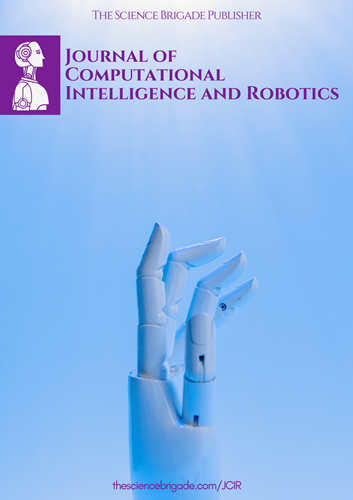Utilizing Transformers for Interactive Chatbot Development
Keywords:
natural language processing, NLP, Chatbot, transformer model, tokenizationAbstract
Transformers, a novel architecture introduced by Vaswani et al. in "Attention is All You Need" (2017), have revolutionized natural language processing (NLP) by effectively using attention mechanisms to process and generate human language. This paper explores the implementation of a chatbot using the transformer model, specifically focusing on the practical aspects of tokenization, model selection, and generation of responses. The paper outlines the methods used, presents results from various model configurations, and provides an analysis of the chatbot's performance. Improvements and future directions are also discussed.
References
Hugging Face. (n.d.). Hugging Face Transformers Documentation. Retrieved from https://huggingface.co/transformers/
Wu, K., & Chen, J. (2023). Cargo Operations of Express Air. Engineering Advances, 3(4), 337-341.
Cao, J., Ku, D., Du, J., Ng, V., Wang, Y., & Dong, W. (2017). A Structurally Enhanced, Ergonomically and Human–Computer Interaction Improved Intelligent Seat’s System. Designs, 1(2), 11. https://doi.org/10.3390/designs1020011
Liu, S., Wu, K., Jiang, C., Huang, B., & Ma, D. (2023). Financial time-series forecasting: Towards synergizing performance and interpretability within a hybrid machine learning approach. arXiv preprint arXiv:2401.00534.
Vaswani, A., Shazeer, N., Parmar, N., Uszkoreit, J., Jones, L., Gomez, A. N., ... & Polosukhin, I. (2017). Attention is all you need. Advances in neural information processing systems, 30.
Wu, K., & Chi, K. (2023). Enhanced E-commerce Customer Engagement: A Comprehensive Three-Tiered Recommendation System. Journal of Knowledge Learning and Science Technology, 2(3), 348-359
Huang, X., Zhang, Z., Guo, F., Wang, X., Chi, K., & Wu, K. (2024). Research on Older Adults’ Interaction with E-Health Interface Based on Explainable Artificial Intelligence. In International Conference on Human-Computer Interaction (pp. 38-52). Springer Nature Switzerland Cham.
Liu, S., Yan, K., Qin, F., Wang, C., Ge, R., Zhang, K., Huang, J., Peng, Y., & Cao, J. (2024). Infrared Image Super-Resolution via Lightweight Information Split Network. arXiv preprint arXiv:2405.10561.
Wu, K. (2023). Creating panoramic images using ORB feature detection and RANSAC-based image alignment. Advances in Computer and Communication, 4(4), 220-224.
Jiang, H., Qin, F., Cao, J., Peng, Y., & Shao, Y. (2021). Recurrent Neural Network from Adder’s Perspective: Carry-Lookahead RNN. Neural Networks, 144, 297-306.
Wu, K. (2023). Creating panoramic images using ORB feature detection and RANSAC-based image alignment. Advances in Computer and Communication, 4(4), 220-224.
Lin, T., & Cao, J. (2020). Touch Interactive System Design with Intelligent Vase of Psychotherapy for Alzheimer’s Disease. Designs, 4(3), 28. https://doi.org/10.3390/designs4030028
Wu, K. (2024). Optimizing Diabetes Prediction with Machine Learning: Model Comparisons and Insights. Journal of Science & Technology, 5(4), 41-51.
Chen, Z., Ge, J., Zhan, H., Huang, S., & Wang, D. (2021). Pareto Self-Supervised Training for Few-Shot Learning. In Proceedings of the IEEE/CVF Conference on Computer Vision and Pattern Recognition (pp. 13663-13672)
Downloads
Published
How to Cite
Issue
Section
License

This work is licensed under a Creative Commons Attribution-NonCommercial-ShareAlike 4.0 International License.
License Terms
Ownership and Licensing:
Authors of this research paper submitted to the journal owned and operated by The Science Brigade Group retain the copyright of their work while granting the journal certain rights. Authors maintain ownership of the copyright and have granted the journal a right of first publication. Simultaneously, authors agreed to license their research papers under the Creative Commons Attribution-NonCommercial-ShareAlike 4.0 International (CC BY-NC-SA 4.0) License.
License Permissions:
Under the CC BY-NC-SA 4.0 License, others are permitted to share and adapt the work, as long as proper attribution is given to the authors and acknowledgement is made of the initial publication in the Journal. This license allows for the broad dissemination and utilization of research papers.
Additional Distribution Arrangements:
Authors are free to enter into separate contractual arrangements for the non-exclusive distribution of the journal's published version of the work. This may include posting the work to institutional repositories, publishing it in journals or books, or other forms of dissemination. In such cases, authors are requested to acknowledge the initial publication of the work in this Journal.
Online Posting:
Authors are encouraged to share their work online, including in institutional repositories, disciplinary repositories, or on their personal websites. This permission applies both prior to and during the submission process to the Journal. Online sharing enhances the visibility and accessibility of the research papers.
Responsibility and Liability:
Authors are responsible for ensuring that their research papers do not infringe upon the copyright, privacy, or other rights of any third party. The Science Brigade Publishers disclaim any liability or responsibility for any copyright infringement or violation of third-party rights in the research papers.




